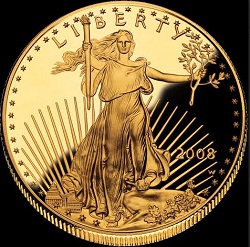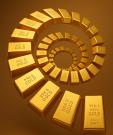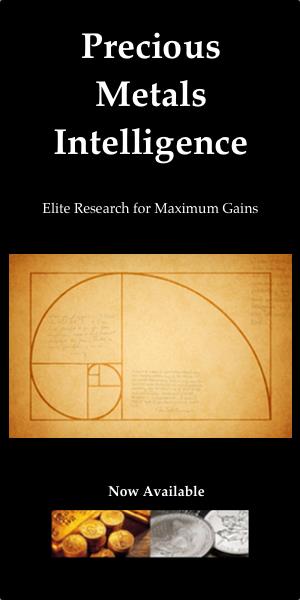Understanding Gold And Silver ETFs

If you have begun recently to consider investing in gold or silver -- congratulations for thinking outside the box of conventional asset classes. Whether you've arrived at this point due to the recent turbulence in the stock market, or you'd like to diversify into an asset class that will always maintain some intrinsic value, or you'd simply like to profit from an increase in the price of gold or silver, you've made an important step toward protecting your wealth and profiting in the future. And if you've followed our analysis in other articles, you know why we anticipate significant rises in the price of both metals in the coming years.
Once you've decided to take this step, you'll be met with what may seem like an overwhelming number of ways to invest in the precious metals market, each with its own positive and negative aspects. There are gold and silver coins, rounds, and bullion bars for purchase in stores and online. There are storage options from personal safes to offshore vaults to segregated and pooled accounts. There are futures contracts and options contracts. Each of these vehicles has its own particular merits.
And now thanks to the advent of ETFs (exchange-traded funds), it is easier than ever to invest in gold or silver. ETFs allow individual investors to participate in the precious metals market with the same ease as if they were buying or selling a regular stock, through any full service or online brokerage.
Yes, with just a few clicks of a button, you can own gold or silver, without worrying about checking the purity of coins or bars, shipping costs, storage fees, loss, or insurance concerns.
Compared with the underlying metal that has been a treasured object since the dawn of human history, precious metals ETFs are a relatively new phenomenon. The first open gold ETF, the State Street Global Advisors SPDR Gold Trust (ticker GLD) has existed since only 2004. The fund, of which each share represents roughly 1/10 of a troy ounce of gold, holds its metal in bullion form in vaults in London. Through buying shares of GLD, an individual investor can take ownership of as much gold as desired at any time the stock market is open.
The Proliferation of ETFs
This would all be very simple, except that in the last decade, the number of ETFs dedicated to the precious metals market has gone from one to over 50.
Each ETF is structured differently. Where once there was once only one gold bullion ETF, there are now:
- Open gold ETFs
- Closed gold ETFs
- Gold ETNs (exchange-traded notes)
- Gold trusts that do not allow investors to take delivery of gold
- Gold trusts that do allow investors to take delivery of gold
- Gold futures ETFs
- Short gold ETFs
- Leveraged gold ETFs
- Gold covered call ETNs
- Gold in foreign currency ETFs
- Gold hedged ETFs
And, each of these types of funds is also available for silver!
For a new investor in the precious metals space, the number of options can be overwhelming. Investment advisors are likely of little help, because not only do they tend to know very little about the significance of gold and silver to an overall portfolio, they are even less likely to be educated on the differences between all the options in the precious metals ETF world.
Let us be crystal clear: it strongly matters which gold or silver ETF you choose. Choosing the wrong fund can cost you thousands of dollars over the course of several years. From ETF management fees, to tracking error, to counterparty risk, to tax ramifications-- each fund behaves quite differently. While one ETF might be more appropriate for a short-term horizon, it would be completely unsuitable for a long-term investment. Indeed, we have seen some investors be correct on the long-term direction of the price of gold, but lose money nonetheless due to the wrong choice of ETF. The decision is that important.
Here is where this series of articles will help. Over the course of the next few weeks, we will review the gold and silver ETF worlds, and offer some of our top recommendations.
Types of Funds
Throughout this series, you will see references to several different types of exchange-traded products. What these funds all have in common is that they trade on standard US stock exchanges, and can be bought or sold at any time the market is open, without early withdrawal penalties or any of the other operational issues of standard mutual funds.
The funds you see in this series will fall into one of three categories:
- Open ETF
- Closed ETF
- ETN
In most cases, ETFs will be more suitable to long-term investments, due to the lower credit risk and better long-term tracking. ETNs are usually only useful for shorter-term trades.
Precious Metals and Taxes
Comprehensive tax guidance is beyond the scope of this article, due to the complexity of the US tax code, individual financial situations, and the ever-changing nature of tax laws. You should consult with a qualified tax advisor for individual tax questions.
With that said, we will provide a general outline of the tax laws in effect at the present time for US investors in precious metals.
Precious Metals Taxes Throughout History
For the vast majority of human history, there have been no taxes on precious metals ownership, because precious metals have been used directly as money.
In the United States up until 1933, the value of the US Dollar was set to 1/20 an ounce of gold. In other words, an ounce of gold was worth $20. While an individual's income or property may have been taxed, once your money (gold) was saved, it was not subject to further taxes when you wanted to spend it.
In 1933 during the midst of the Great Depression, President Roosevelt outlawed private ownership of gold, and devalued the US Dollar so that it now took $35 to buy the same ounce of gold.
In 1971 President Nixon fully removed the US Dollar from all convertibility to gold at any price, and in 1975 it became legal once again for American investors to own gold.
Yet the gold that was once tax-free money was now treated as a 'collectible', and taxed in the same category as stamps and fine art. This system remains in place to this day.
Current Laws
As a 'collectible', gold and silver receive a higher tax rate than most other investments regardless of the amount of time held. The standard tax rate on collectibles is currently 28%, compared to 15% on long-term capital gains.
One of the benefits of certain precious metals ETFs and ETNs is that they are structured to receive better tax treatment than gold and silver bullion held privately.
Next week we will continue our series and profile several of our favorite ETFs that allow investors easy access to the precious metals market.
********
Free Gold-Eagle Newsletter!
- Fresh weekly insights on gold, precious metals, and the economy
- Leading authors from around the world
- Always free
- Stay informed!


















